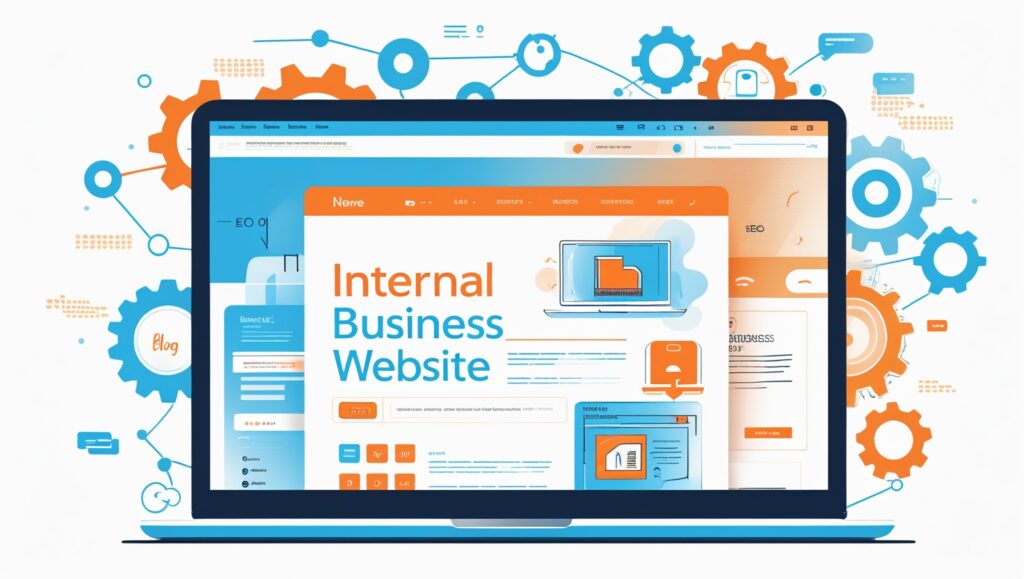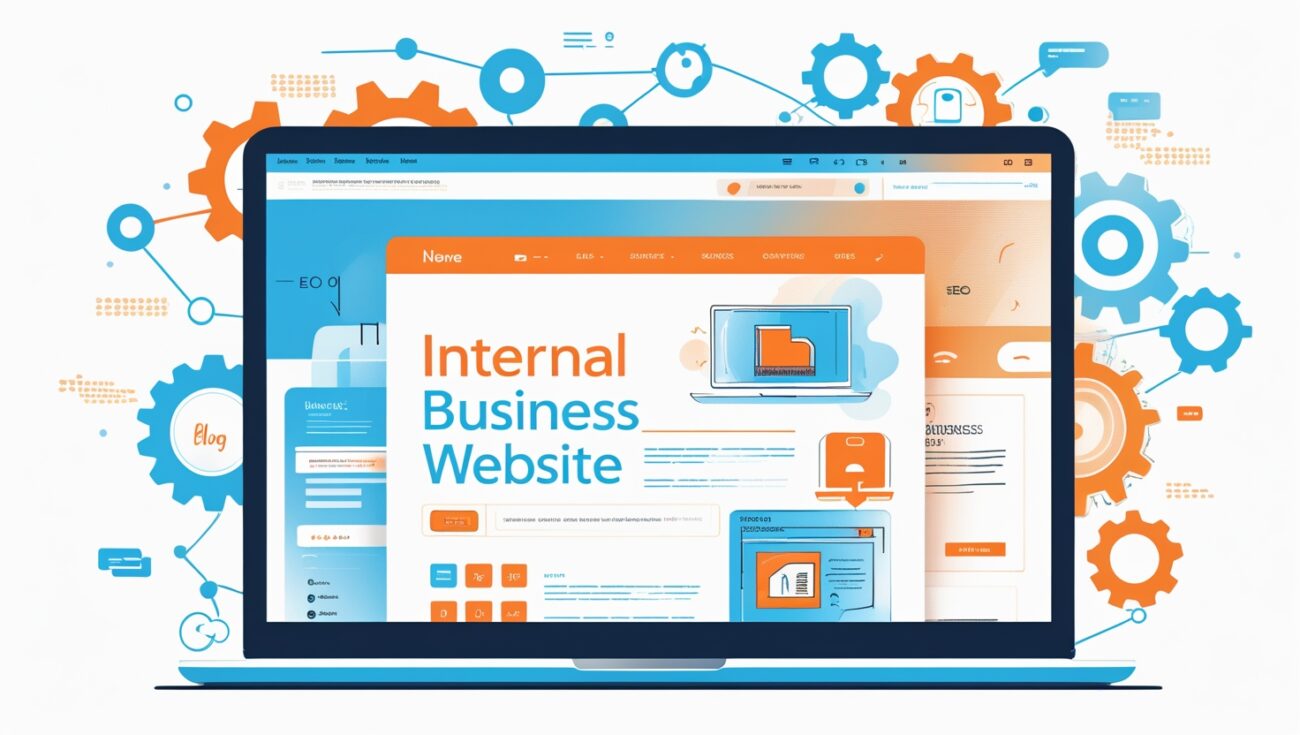Internal Linking for Small Business Websites: A Complete Guide
Internal linking is one of the easiest ways to improve your website’s SEO, boost rankings, and keep visitors engaged. In this guide, I’ll show you how I personally use internal linking on my small business site and how a tool like LinkBot makes the process 10x easier.

Table of Contents
When I first started building my website, I didn’t realize how important internal linking was. I thought backlinks from other sites were the only thing that mattered. But over time, I discovered that linking my own pages together not only improved my SEO rankings, it also kept visitors clicking through my content longer—which means more trust, more leads, and more sales.
For me, the turning point came when I looked at my analytics and noticed people were dropping off after reading just one page. That’s when I started intentionally creating internal links between blog posts, product pages, and even my About page. Suddenly, my bounce rate dropped, and my average session time shot up.
The challenge? Doing this manually was time-consuming. I had to constantly go back, reread old posts, and figure out where I could add new links. That’s why I started using LinkBot. Honestly, it changed the game for me. The tool scans your content, finds the best linking opportunities, and even suggests anchor text. It saves me hours every week, and the SEO impact has been noticeable.
Here’s why internal linking matters so much:
- It helps Google understand your website’s structure, so your important pages rank higher.
- It spreads link juice (SEO authority) across your site.
- It improves the user experience, because visitors can easily find related content.
- It increases conversions by guiding readers toward your sales or sign-up pages.
I always tell other small business owners this: don’t just write blogs and let them sit there. Make sure every post connects to at least 2–3 other pages on your site. If you have a service page, link it to a blog post. If you have a blog post, link it back to your homepage or contact page. This creates a natural flow for both your readers and the search engines.
And if you’re like me and don’t have the time to do all this manually, that’s when automation tools step in. With LinkBot, I don’t worry about missing opportunities because it does the heavy lifting for me. I just approve the suggestions, and boom—my website grows stronger internally without me spending hours on it.
If you run a small business website, I highly recommend making internal linking part of your SEO strategy right away. It’s one of those “hidden gems” that doesn’t cost much but brings long-term results.
I’ll put it simply: backlinks get the attention, but internal links are the secret backbone of a well-optimized site. And with a tool like LinkBot, you’ll be able to scale this strategy without burning yourself out.
That’s my complete guide. If you want to make internal linking easier (like I did), check out LinkBot here and start optimizing your site today.
Why Internal Linking Helps Google Trust You
When I first started building websites, I didn’t realize that Google needs to trust your site structure. Over time, I learned that internal links act like little signals showing Google what’s most important. By creating clear connections between pages, you help both your visitors and Google understand your content.
How Internal Links Boost Conversions
It’s not just about SEO. For me, internal links have helped keep people moving through my site longer, and that means more clicks on affiliate links, more newsletter signups, and more sales. When you guide people naturally, they’re more likely to trust you and take action.
Internal Linking Mistakes I Made
I’ll be honest—I used to link randomly. I’d throw in links just because I felt like I should. The result? Confused readers and wasted SEO power. Now, I make sure every internal link has a purpose: either to guide, educate, or convert.
The Role of Anchor Text in Internal Linking
If you’ve ever clicked a link that said “click here,” you know how empty it feels. Instead, I focus on keyword-rich anchor text. For example, instead of “click here,” I’ll write “learn how internal linking improves SEO.” This helps both readers and search engines.
Keeping Readers Engaged with Related Links
Something I learned the hard way: readers leave fast if they don’t see where to go next. By adding related links at the bottom of a blog post, I’ve noticed visitors exploring more pages. That reduces bounce rates and boosts time on site.
Internal Linking and Affiliate Marketing
For me, affiliate marketing changed when I started connecting my content properly. By linking my guides, tutorials, and reviews together, I created a funnel without even realizing it. It felt natural for readers and boosted my affiliate clicks.
How I Organize Internal Links Like a Map
I picture my website as a city map. My homepage is the city center, and each category is like a neighborhood. Internal links are the roads connecting everything. Without them, visitors would get lost, and Google would struggle to follow along.
The Balance Between Too Many and Too Few Links
I’ve seen websites with so many links that it feels spammy. On the other hand, I’ve landed on posts with zero links, which feels like a dead end. I try to keep a balance—enough links to guide, but not so many that it overwhelms.
Internal Linking for New Websites
When I launched my first small business site, I thought internal linking only mattered later. Big mistake! Even a brand-new website benefits from links because it creates a foundation for growth. If you start early, scaling later becomes effortless.
Using Internal Linking for Authority Pages
Every site has those “pillar” or “money” pages. For me, that might be a big guide or a product review that drives sales. I always make sure these pages get the most internal links, because that tells Google, “this page is important.”
How Internal Linking Builds Relationships with Readers
Internal links aren’t just technical. They actually build trust. When I guide readers to another helpful resource on my site, I’m showing them I care about their experience. That kind of trust has turned casual visitors into loyal subscribers.
Final Thoughts: Internal Links Are Your Hidden Power
If you ask me, internal linking is the most underrated SEO strategy. It doesn’t cost money, and it only takes a little time. Yet it keeps readers engaged, helps Google understand your site, and even boosts affiliate earnings. For me, it’s the backbone of every site I build.

